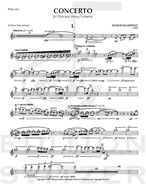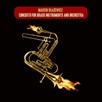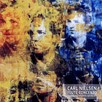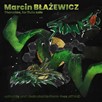
Concerto for Flute and String Orchestra
Composer: Marcin Blazewicz
Instrument: Flute and String Orchestra
Level: Advanced
Published: 2009
Price: €35.00
Item details
-
Description +
-
Duration: 15 min.
Concerto for flute and string orchestra consists of two contrasting parts. They constitute a mutual opposition, but at the same time perfectly complement each other just like two sides of a coin, sadness and tragedy on the one hand and euphoria and joy of life on the other.The first part (Maestoso) is a gloomy free rhapsody with changing paces and moods. The leitmotif of this part consists of two descending intervals, a minor second and a perfect fifth, which emphasises the flute in a solo part in the third act of the composition. Various tones of this instrument, permeated with pain, pervade the whole of this part. But at the same time, the rendition and the accompaniment often make the flute sound vary turbulent. The features determining the form of this part are changeability and contrasting moods. The emotional climax is reached right before the cadence of the soloist and returns after its end. The flute is treated as an instrument capable of conveying various moods and emotions, from very subtle to outright brutal. The tone colour is an important element of the development of the form in the solo part, but also in the part performed by the accompanying string section (articulation).
The second part (Allegro) is a vivid and joyful rondo.
An important part of its impetuosity is the rhythm, which utilises certain elements of the rhythmicity developed by the peoples of the Carpathian Mountains, from Poland to Romania.In the melodic layer we will not discern, however, any quotations from existing folk melodies. It is rather an imaginative melodic pattern inspired by folk music, but existing only in the composers imagination. The tome colour constitutes an extremely important element of the musical narrative. In the part played by the string section there appear very refined means of articulation and colour, which frequently overlap and permeate each other. The solo part, which is performed in a truly virtuoso manner, sometimes blends in with those measures, and sometimes stands in opposition to the tone colour of the string section. The volume of the sound and the tone colour are expanded thanks to the usage of the piccolo flute.
The catalogue of technical measures used in the part played by the flute is extremely rich and gives the soloist an excellent opportunity to presents his or her skills.The two parts of the concert demand a lot from the soloist, who needs to possess many various skills. This concert provides the soloist with a great opportunity to present not only his or her technical craft, but also to display his or her musical sensitivity. The flute is not treated as an instrument with a delicate sound, but more like a tool conveying a tremendous force and evoking vehement emotions.
-
-
Instrumentation +
-
Flute and String Orchestra
-
-
Watch+
-
About the composer +
-
Composer and teacher. Born in Warsaw in 1953. He began to study music when he was 13 years old, first at the Oskar Kolberg primary Music School then at the F. Chopin Secondary Music School (double bass). Upon passing his secondary school leaving examination (matura) he studied natural philosophy at the Academy of Catholic Theology for one year (1975/76). Upon graduating from secondary music school in 1977 he began to study at the Department of Composition, Conducting and Theory of Music at the Fryderyk Chopin Academy of Music in Warsaw in Professor Marian Borkowski's class of composition which he finished with honours (1977-1982). He attended composer courses led by François Bernard Mâche (Pécs, Hungary 1980) and Yannis Xenakis (Salzburg, Delft 1985), obtained a SACEM scholarship from Sociéte des Compositeurs et Editeurs de Musique (France) and, as holder of an Acanthes scholarship, he attended a course in composition led by Olivier Messiaen in Avignon (France) in 1987.
Professor Marcin Błażewicz has been a member of the faculty of the AMFC in Warsaw since 1985, first as assistant then tutor (1996-2003) and finally as associate professor at the Chair of Composition. He teaches the following subjects: score reading and introduction to composition and instrumentation (his main interest). He has supervised many master's theses. He was deputy dean of FCUM Department I in 1999-2002 and 2005-2008. In 2008 he was elected dean of the Department of Composition, Conducting and Theory of Music for term 2008-2012.
Marcin Błażewicz presented a paper "On the situation in Polish Music after 1989" at the 5th Biennial "La recherche musicale en Europa" (Gif-sur-Yvette, France 1992). He has organised more than 200 concerts propagating contemporary music including several cycles: Presentation of Young Composers, Encounters with Contemporary Music, Young Musicians for Young Audiences (Warsaw 1979-81). Artistic director and founder of the International New Music Forum festival (Warsaw 1983-87), artistic director of the International Festival "Jeunesses Musicales" (Częstochowa, 1986, Warsaw 1990). Co-founder of the Modus group (1983), music advisor to the French Institute in Warsaw (1985-86). Member of the jury of the International Radio Festival Prix Italia (Peruggia 1989). Musical director of the Polish Radio Theatre (1986-97). Editor-in-chief of the journal "Muzyka21" (2000-2001). Since 2005 he has been holding a class of composition in Fryderyk Chopin University of Music/ FCUM/.
-
-
Reviews +
-
Born in Poland 1953, Marcin Blazewicz studied under Borkowski, Xenakis and Messian, among others, and is currently a professor of composition at the Chopin Academy in Warsaw. This two movement concerto was written for Pierre-Yves Artaud in 1999 and is published here with a piano reduction by Jerzy Wolosiuk. The two movement form is reminiscent of the Penderecki flute concerto, with the movements having some marked contrasts while also linking together with a sense of organic progression. The opening builds a wonderful sense of tension, with ominous repeated Ds and a static chord in the strings providing an atmospheric backdrop for the flute’s dramatic opening statement. The movement has a sense of free form, with flowing melodic lines giving way to faster moving material and a challenging and energetic cadenza. The Allegro second movement has an obvious folk-music influence, with strong rhythms and a dance-like character. This is very welcome addition to the repertoire and an enjoyable discovery.
Carla Rees,
FLUTE Journal of the British flute Society (No. 2 / 2012)
-
-
Credits +
-
Front Cover artist: Marta Paulat
Front Cover graphics and layout: Ronni Kot Wenzell
Dedicated to Pierre-Yves Artaud
Engraving: Jerzy Wolosiuk
Printed in Copenhagen, Denmark
Copyright © Edition Svitzer
www.editionsvitzer.com
-



